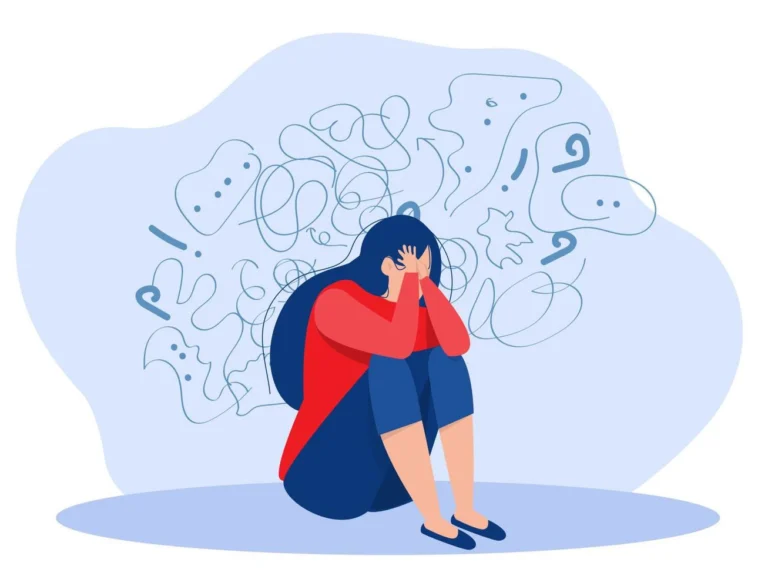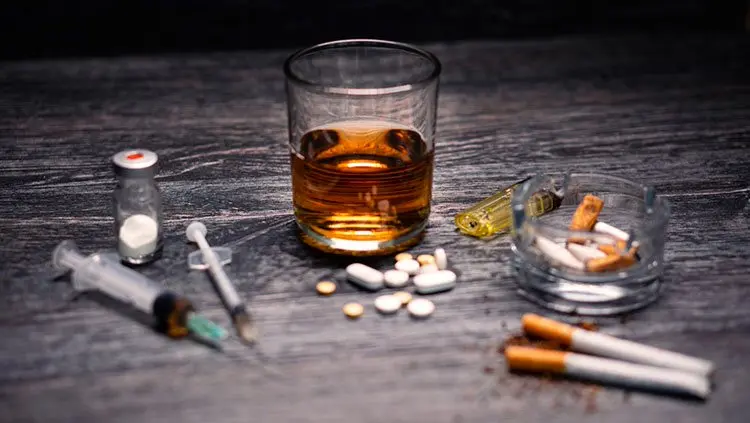From Trauma to Triggers: How Childhood Experiences Impact Addiction
- Baltimore Therapy Center

- Jul 4, 2025
- 7 min read
Updated: Oct 25, 2025
Addiction, also known as Substance Use Disorder (SUD), is a common problem across the globe. Whether someone is suffering from drug or alcohol addiction, they can experience a range of physical and psychological symptoms that vary in severity and potentially lead to death.
While there isn’t a single cause of addiction, vulnerability to developing a substance addiction can be narrowed down to factors such as social, environmental, physical, psychological, and so on. A common factor that influences whether someone is vulnerable to addiction is traumatic childhood events.
To combat addiction, it’s important to understand factors such as causes, risks, and treatment. Read on to learn more about how childhood experiences impact addiction and how mental health issues are treated.

Understanding Adverse Childhood Experiences (ACEs)
Adverse Childhood Experiences (ACEs) refer to a negative event during someone’s childhood. These events are potentially traumatic, leading to long-term negative health effects, whether physical, psychological, or both. Adverse Childhood Experiences can range in their severity and how they affect the person for years to come.
Common forms of Adverse Childhood Experiences include:
Physical and emotional neglect
Physical, emotional, or sexual abuse
Household dysfunction (e.g. parents splitting up, domestic violence, incarceration)
Frequent examples of ACEs can include bullying, racism, falling victim to violent behaviour, living in a hostile living environment, and so on. Unfortunately, ACEs are much more common than you may think.
According to the Centers for Disease Control and Prevention, 64% of adults experience some form of Adverse Childhood Experience before turning 18. This leaves many people exposed to the long-term effects associated with traumatic childhood events.
The Science of Trauma and the Brain
Experiencing a traumatic event at an early age can adversely affect the brain in many ways. This is especially the case because the brain is still developing until the age of around 25.
Studies show that when someone experiences a traumatic event, their brain chemistry is altered. The protective mechanism in our brains, also known as the “Fear Circuitry,” is stimulated. When these protective mechanisms are activated, it overrides our prefrontal cortex, the area of the brain that is responsible for rational thinking.
Essentially, when faced with potential triggers, the traumatized person will often experience the fight, flight, or freeze reaction. This can be the case even in low-stakes situations. The victim does not have the capacity to choose how they react, because the protective mechanism in their brain is so reinforced and they’re unable to regulate their emotions or assess the situation rationally.

How Traumatic Events Leads to Mental Health Issues
Studies from the Centers for Disease Control and Prevention show that ACEs may be responsible for almost 2,000,000 heart disease cases and over 21,000,000 cases of depression in the US. The same study also suggests that preventing ACEs could prevent suicide attempts by up to 89% among high schoolers.
According to the Adverse Childhood Experiences (ACEs) UK Report in 2023, total annual costs due to ACE related disorders and behavioral issues were estimated to be US$581 billion in Europe and $748 billion in North America.
Depression is the most common mental health disorder associated with ACEs. Additionally, many studies show that ACE events have been linked to other illnesses such as obesity, lung, and liver disease, as well as behavioral addictions such as smoking, drinking alcohol, or drug consumption. The same study suggests that up to 66% of serious drug use patterns are potentially due to ACs.
Clearly, ACEs have a profound impact not only on the traumatized person but also the wider community. In addition to helping people recover healthily from these traumatic events, we need to safeguard and support members of the community to prevent ACEs from happening, and reduce the associated socioeconomic costs.
How Trauma Leads to Addiction
It’s not always the case that someone will exhibit visible symptoms of their ACE. Often, they may repress these negative emotions, and this may be externalized in other ways, often through self-medication.
Much like with other health conditions such as anxiety or depression, subjects resort to self-medication in order to minimize their negative emotions. Rather than confronting these emotions directly through therapy, subjects will resort to binge drinking alcohol or consuming psychoactive substances to experience euphoria and relief from feelings of stress, anxiety, and self-loathing.

How Addictive Substances Affect our Brains
The brain disease model of addiction can help us understand how neural pathways respond to drug and alcohol consumption. When we consume addictive substances, the mesolimbic pathways in our brains – also known as the “reward pathways” – are stimulated, leading to a release of dopamine in the brain.
The more we engage in drug and alcohol use, the more dependent we become for these substances to experience pleasure and euphoria. Unfortunately, however, these feelings of pleasure are short-lived. As a result, the dependent subject will keep seeking to replicate these feelings by consuming psychoactive substances not only more frequently but in higher quantities.
This means that the subject will not only become dependent on them, but will seek these feelings more frequently. This also leads to an increased tolerance, meaning that they need more to experience the same levels of pleasure as before.
At this stage, the person will be addicted to the substances to experience pleasure, and will suffer from dangerous and potentially life-threatening withdrawal symptoms.
The Link Between ACE Scores and Addiction
According to the ACE Questionnaire, there are 10 categories or questions concerned with childhood trauma in which users can answer yes or no. The person answering the questionnaire can accumulate a maximum score of 10, with 1 point being allocated for each affirmative answer.
Each question concerns the following factors respectively:
Physical abuse
Emotional abuse
Sexual abuse
Physical neglect
Emotional neglect
A parent with a substance abuse problem
A parent with a mental illness
A parent who is incarcerated
Domestic violence
Parental separation or divorce
Studies show that those who had a score of 5 or higher are 7 to 10 times more likely to develop an illicit drug addiction than those who did not suffer from ACEs. There is a strong link between high ACE scores and depression, which is another driving force in developing a drug and alcohol addiction.
Furthermore, children are more likely to suffer from ACEs if they have parents who are consuming alcohol in excessive quantities. Being brought up in a house where alcohol is consumed excessively and frequently is another factor that exposes the subject to normalizing and falling into addiction.

Breaking the Cycle: Prevention and Healing
Much like any mental health disorder, whether it be anxiety or depression stemming from ACE, or substance addiction, it needs to be addressed early in order to ensure optimal recovery. Some of the most effective ways to treat someone dealing with ACEs and substance addiction include:
Interventions & diagnosis
Therapy & treatment
Accessing support networks
Interventions & Diagnosis
If a loved one is exhibiting worrying signs, whether it be anxiety, depression, substance addiction, or antisocial behavior, it’s important to address these issues early. There are many forms of intervention, including:
Primary prevention: Safeguarding people and the environment in order to prevent ACEs or addiction habits from developing in the first place.
Secondary intervention: Identifying whether someone is at risk of ACE or substance addiction. ACE Aware has screening tools to help understand whether someone is at risk. As for substance addiction, subjects can use the CAGE Questionnaire or Alcohol Use Disorder Identification Test (AUDIT) to understand the level of dependence.
Tertiary intervention: Addressing the long-term effects associated with the condition, whether it’s ACE or drug and alcohol addiction. This can include therapy, family-oriented counseling, attending support networks, and more.
Therapy & Treatment
Therapy and treatment is imperative when someone is suffering from ACE or substance addiction, and it’s typically carried out after the home alcohol detox process has completed. Treatment can come in a range of forms, such as personalized individual therapy, group therapy, holistic treatment, and more.
Individual therapy: Popular forms of individual therapy include Cognitive Behavioral Therapy (CBT). CBT is used to treat a range of mental disorders, such as anxiety, depression, PTSD, substance addiction, and more. CBT aims to help patients understand the root cause of their harmful thinking and behavioral habits, and the coping mechanisms that they can develop to live healthily.
Group therapy: Group therapy can come in the form of support sessions or family therapy. Support sessions yield benefits such as positive social reinforcement and it combats social isolation, as patients are able to share their experiences and resonate with others. Family therapy can help not only strengthen relationships, but form a stronger support network for the patient.
Holistic treatment: Holistic treatment can come in a wide range of forms, such as adventure therapy, yoga, mindfulness, equine therapy, art therapy, and so on. The purpose is not only to address a symptom, but to help the patient experience physical, mental, and spiritual nourishment.

Accessing Support networks
In addition to accessing public and private healthcare, subjects can access a range of community-based support networks. The most popular forms of support groups associated with Adverse Childhood Experiences or substance addiction include Hetty’s, Body and Soul, and Al-Alon.
Breaking the Cycle Together
Addiction is often the result of deep-rooted pain, unaddressed trauma, and Adverse Childhood Experiences that alter the way a person behaves, thinks, and perceives their world around them. ACEs and substance addiction form a mutually destructive relationship, and there is far too much evidence to dismiss the connection.
Understanding this connection is the first step toward breaking the cycle among our communities. Through early intervention, trauma-informed therapy, and making supportive communities more accessible, recovery is always a possibility, no matter how challenging.
If you or a loved one are struggling with substance addiction or the effects of traumatic childhood experiences, understand that help is available. Healing begins when we address the root causes, not only the symptoms. Together, we can break the dangerous cycle and establish a healthier, happier, lifestyle for you.




Comments